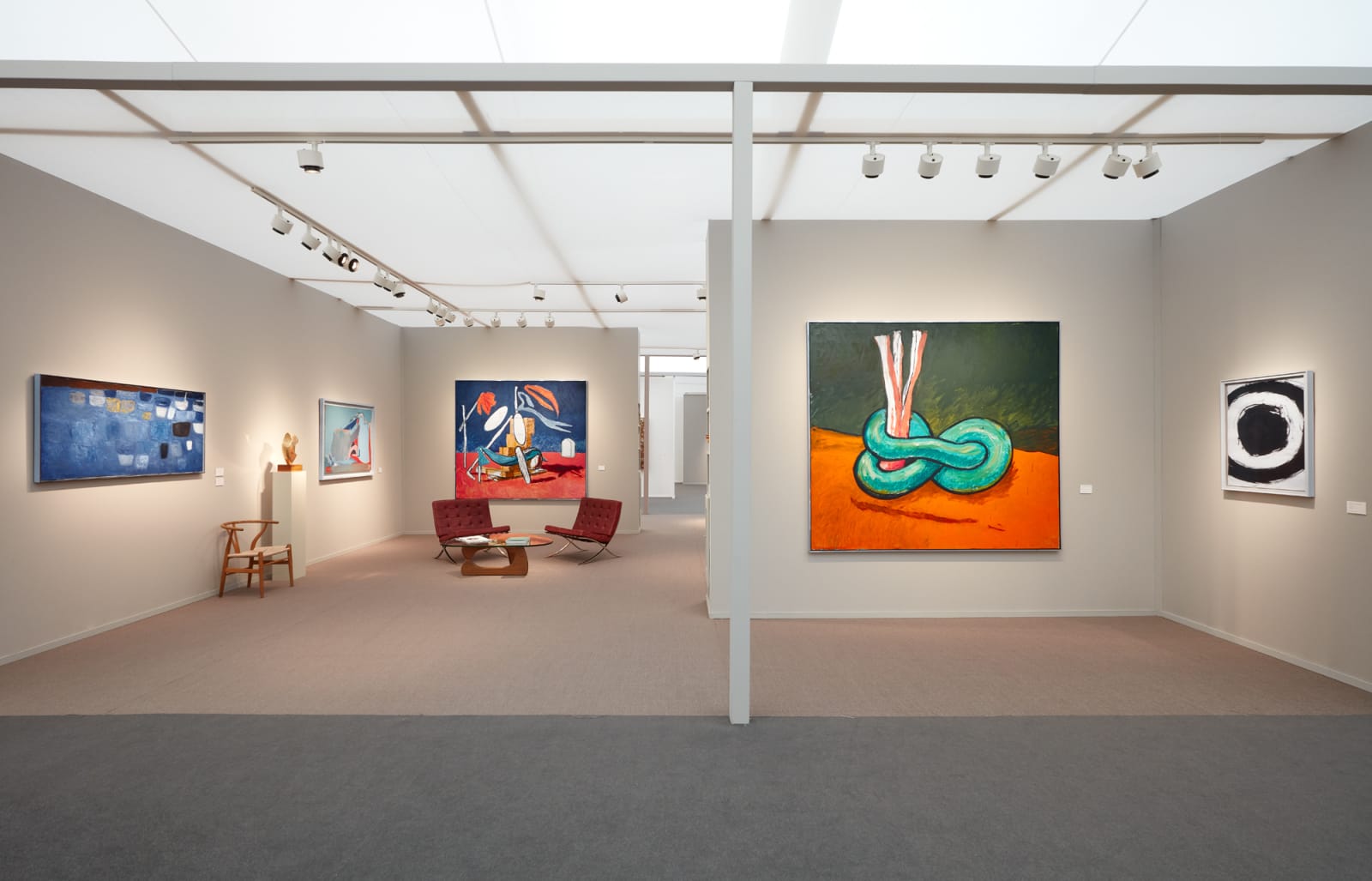Victor Willing 1928-1988
200 x 220 cm
‘On high doses, I only slept four hours in 24. I was hyperactive. I would feel very tired but not sleepy, very calm but alert. In this state, I would sit down in a comfortable upright chair, relax and stare at the wall. After a time, I could see through the wall – a scene, brightly lit, clearly defined on the other side, like a stage, spotlit. No figures. No action, therefore, just a scene. The “lifesize” objects would appear in three dimensions, but as though already drawn in charcoal and pastel (…) I would remain in my chair and, taking paper and charcoal, simply copy down the scene (…) Subsequently, “meanings” might occur to me, but in advance there was nothing.’ 1
It was this kind of visionary drawing that formed the basis for Knot. In an interview with John McEwen for his 1986 retrospective at the Whitechapel Gallery, Willing describes this picture as ‘a snakelike form grips a bunch of sticks’. Other paintings from the early 1980s contain similarly Freudian motifs. In the Tate Gallery’s Rien, 1980, an abandoned leather belt lies coiled like a snake – Willing explained that the painting was about the unwelcome intrusion of business affairs into a day spent on the beach. The suit and belt are a stand-in for Willing himself, or at least for Willing in his role as ‘business man’. Ropes, belts and swathes of fabric recur in numerous paintings, weaving menacingly around other objects, ready to move in, as it has here. Here the image might be a metaphor for a controlling romantic relationship, or perhaps the grip of illness.
Here, the scale of the central motif necessitates that Willing’s marks are large and loose. Like a pastel drawing, he colours in the
forms in rudimentary fashion, establishing the image apparently more urgent than any deep preoccupation with technique. Willing’s crude application of paint is comparable to his Canadian-American contemporary Philip Guston, who abandoned Abstract Expressionism in favour of more autobiographical subjects. Willing’s placement of figures and objects on a coloured ’island’ or ’stage’ is a device that recurs throughout his career. Just as Bacon portrayed his subjects within brightly coloured arenas, Willing uses a similar strategy to isolate his subjects, intensifying the psychological atmosphere.
1 The artist in a letter to the Tate Gallery, 7 October 1982, upon Tate’s acquisition of Place with a Red Thing, 1980
Provenance
Saatchi Collection, LondonExhibitions
London, Whitechapel Gallery, Victor Willing: A Retrospective Exhibition 1952 – 1985, 6 June – 20 July 1986, illus colour unpaginated
Cascais, Portugal, Casa das Historias Paula Rego, Victor Willing: Uma Retrospectiva, 9 September – 2 January 2011, illus colour p133
Literature
Alastair Hicks, New British Art in the Saatchi Collection, Thames & Hudson, London, 1989,cat no.130, illus colour p118John McEwen, Victor Willing, Selected Writings and Two Conversations with John McEwen, Karsten Schubert, London, 1993, p67
Fiona Bradley (ed.), Lynne Cooke, John McEwen, John Mills, Paula Rego, Nicholas Serota, Victor Willing, August Media, London, 2010, p43, illus colour p98, related study illus colour p100



